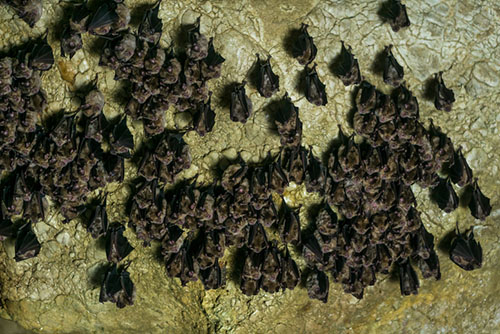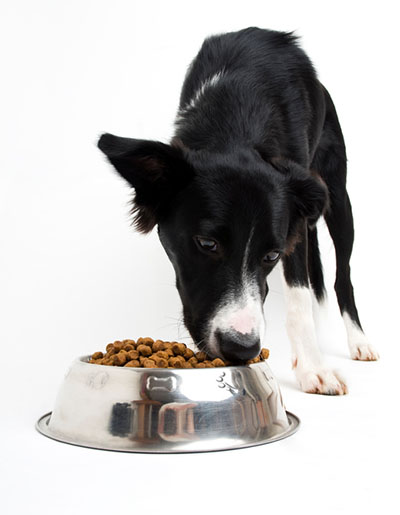Antifungals for Integumentary Disease
- Systemic Pharmacotherapeutics of the Integumentary System
- Overview of Systemic Pharmacotherapeutics of the Integumentary System
- Antibacterials for Integumentary Disease
- Antifungals for Integumentary Disease
- Antiparasitics for Integumentary Disease
- Antihistamines for Integumentary Disease
- Essential Fatty Acids for Integumentary Disease
- Hormonal Therapy for Integumentary Disease
- Immunomodulators for Integumentary Disease
- Psychotropic Agents for Integumentary Disease
- Vitamins and Minerals for Integumentary Disease
The antifungal drugs used most commonly to treat integumentary diseases are listed in Dosages of Antifungal Medications.
Dosages of Antifungal Medications
Griseofulvin:
Griseofulvin has a very low solubility in water; GI absorption is variable and incomplete with the micronized form. Absorption may be enhanced by administration with a fat-containing meal or by formulations using polyethylene glycol or very small particles (micronization). The ultramicronized form is nearly 100% absorbed.
Griseofulvin is concentrated in skin (the highest concentration is in the stratum corneum), hair, nails, fat, skeletal muscle, and liver and can be found in the stratum corneum within 4 hr of dosing. It is also secreted in sweat and is deposited in keratinocytes and remains tightly bound during differentiation, so new skin growth is the first to be clear of infection. It is effective only against dermatophytes, eg, Microsporum, Trichophyton, and Epidermophyton.
In dogs, adverse effects (eg, vomiting, diarrhea) and increased liver enzymes predominate. In cats, anemia, leukopenia, vomiting, diarrhea, depression, pruritus, fever, and ataxia have been described. Bone marrow suppression (usually manifest as neutropenia) may occur idiosyncratically, especially in feline immunodeficiency virus (FIV)-positive cats and in kittens. FIV status should be determined before use, and griseofulvin avoided in kittens <8 wk old. The reactions may be more common and severe in Persian, Himalayan, Siamese, and Abyssinian cats. Teratogenicity is a major problem in all species.
Hemograms should be collected every 2 wk and close observation maintained. Leukopenia is more common in FIV-positive cats, so screening should be done before initiating treatment.
Ketoconazole:
Ketoconazole is a synthetic, broad-spectrum antifungal drug belonging to the imidazole family. It is a potent inhibitor of ergosterol (a main membrane lipid of fungi) synthesis. Fungal cells are thus unable to maintain the integrity of plasma membranes, which leads to cell wall rupture. Because the therapeutic effect of ketoconazole is delayed, amphotericin B is often used in combination for cases of serious systemic disease.
For dermatophytosis, ketoconazole is active against Trichophyton verrucosum, T equinum, T mentagrophytes, Microsporum canis, and M nanum. It is also active against the yeast Malassezia pachydermatis and Cryptococcus neoformans and is normally used at 10 mg/kg/day, PO. For candidiasis, the dosage is 10 mg/kg/day, PO, for 6–8 wk. In some chronic cases, a maintenance dosage of 2.5–5 mg/kg can be used. Coccidioidomycosis responds better to ketoconazole than to amphotericin B in many instances, with a minimal treatment period of 12 mo in animals with disseminated disease. Blastomycosis, histoplasmosis, and cryptococcosis may be treated with a combination of ketoconazole and amphotericin B (the combination is not more effective than the latter alone, but there are fewer nephrotoxic signs). For blastomycosis, a 4–6 mg/kg total dose of amphotericin B is combined with ketoconazole (20 mg/kg/day in dogs, and 10 mg/kg/day in cats). For histoplasmosis, amphotericin B (2–4 mg/kg total dose) is combined with ketoconazole (20 mg/kg/day in dogs, and 10 mg/kg/day in cats).
Ketoconazole inhibits cortisol synthesis and has been used to treat canine hyperadrenocorticism at 10 mg/kg/day. If the cortisol level is still above resting levels after 10 days, the dosage may be increased to 15 mg/kg/day.
Ketoconazole requires an acidic environment for optimal absorption, so H2-blockers or antacids should not be administered concurrently.
In dogs, the most common adverse effects are inappetence, vomiting, pruritus, alopecia, and reversible lightening of the hair coat. Anorexia may be reduced by administering the dose with food. Cats appear to be more sensitive to ketoconazole. Clinical signs of toxicity include anorexia, fever, depression, diarrhea, and increased liver enzymes. Dosages >10 mg/kg/day are rarely given. Hepatotoxicity (cholangiohepatitis and increased liver enzymes) has also been reported.
Itraconazole:
The primary antifungal mechanism of action of itraconazole seems to be the same as that of ketoconazole; however, it has a greater potency, decreased toxicity, and a wider spectrum of activity. Even at high dosages, it does not alter hormone levels in rats, dogs, or people. Itraconazole should be administered with food; the concurrent administration of antacids, H2-blockers, and cholinergics is contraindicated.
Itraconazole is effective against dermatophytes, Candida, Cryptococcus, Histoplasma, Blastomyces, and Sporothrix spp, and the protozoans Leishmania and Trypanosoma. For dermatophytosis in dogs, the dosage is 5 mg/kg/day. For systemic mycoses, the dosage is 5–10 mg/kg/day, but the addition of amphotericin should be considered in rapidly progressing infections. For treatment of dermatophytosis and systemic mycoses in cats, the dosage is 10 mg/kg/day.
A severe, dose-related ulcerative dermatitis (due to vasculitis) has been seen in 5%–10% of dogs given itraconazole in doses of 10 mg/kg. If the condition is identified early, drug withdrawal leads to resolution; if not recognized early, severe, extensive necrosis and sloughing can develop.
Fluconazole:
Fluconazole is a fungistatic triazole compound with a mode of action similar to that of ketoconazole. However, it does not affect mammalian hormone synthesis. Because of its small molecular size and low lipophilicity, it may be more useful in treating CNS mycoses.
Fluconazole is effective against superficial dermatophytes and Candida, Cryptococcus, Histoplasma, and Blastomyces spp. The dosage is 2.5–10 mg/kg/day in dogs. Cats with cryptococcosis can be given 2.5–10 mg/kg, bid.
Fluconazole has had limited use in small animals. In people, it can cause occasional GI adverse effects (eg, vomiting, diarrhea, anorexia, nausea).
Amphotericin B:
Amphotericin is a lipophilic polyene from Streptomyces nodosus that binds to sterols (especially ergosterol), causing increased permeability and leakage of nutrients and electrolytes. It is poorly absorbed from the GI tract and must be given parenterally. IV administration gives good penetration, except into muscle, bone, eye, or synovial fluid.
Amphotericin B is used in progressive or disseminated deep mycosis. It may be combined with flucytosine or minocycline for treatment of Candida and Cryptococcus. Rifampin potentiates the effect of amphotericin on Aspergillus (which is usually resistant against amphotericin alone), Candida, and Histoplasma.
Amphotericin B is insoluble in water and is prepared as an IV solution by forming a colloidal dispersion with sodium deoxycholate. Because it is inactivated by sunlight, it should be stored in the dark. Dilution with large volumes of 5% glucose (10 mg amphotericin B/100 mL fluid) is recommended to reduce nephrotoxicity. The dilution should be given over 2–6 hr. If a bolus is given in 10–60 mL of dextrose (via a butterfly catheter), supplemental fluid diuresis is helpful. Amphotericin B is given at 0.15–0.5 mg/kg every 48 hr until a total cumulative dose of 4–12 mg/kg is reached. Renal toxic effects are monitored by electrolytes or urinalysis at least weekly (urinalysis detects toxicity earlier than biochemistry); BUN, creatinine, PCV, and total plasma proteins should be checked before the administration of each dose. Monthly maintenance therapy is recommended to avoid relapses.
The major adverse effect seen with amphotericin B is nephrotoxicity—most dogs incur some kidney damage. The damage is not correlated with either total dose or duration of therapy. The causes of toxicity include vasoconstriction, impaired acid excretion, and direct tubular injury. Cats are more sensitive, so lower doses are recommended. Adverse effects such as fever, nausea, and vomiting are less severe if diphenhydramine (0.5 mg/kg, IV), aspirin (10 mg/kg, PO), or hydrocortisone sodium succinate (0.5 mg/kg, IV) is given before administration of amphotericin B.
Flucytosine:
This fluorinated pyrimidine was developed as an antineoplastic agent. It interferes with RNA metabolism and protein synthesis in fungal cells. It is well absorbed and enters the CNS in high concentrations. Most of the drug is excreted unchanged in the urine.
Flucytosine is effective against Cryptococcus neoformans, Candida, and other yeasts but has little or no effect on other fungi. Resistance develops frequently; thus, it is given in combination with amphotericin B. It is used almost exclusively for treatment of cryptococcosis. The dosage in dogs and cats is 25–50 mg/kg, tid-qid.
GI tract disturbances (vomiting, diarrhea, anorexia), bone marrow suppression (anemia, leukopenia, thrombocytopenia), and cutaneous eruption (depigmentation, ulceration, exudation, and crust formation) are the most common adverse effects.
Terbinafine:
Terbinafine is an allylamine compound that interferes with fungal sterol biosynthesis at an early stage, causing deficiency of ergosterol, intracellular accumulation of squalene, and fungal cell death. It achieves high concentrations in hair follicles, hair, sebum-rich skin, nail plates, and nails. In people, levels exceeding the minimum inhibitory concentration may be found for up to 3 wk after treatment has ended. There are anecdotal reports of its use against Trichophyton, Microsporum, and Epidermophyton, as well as Malassezia dermatitis. The dosage in cats is 10–30 mg/kg/day. In people, rare cases of hepatic toxicity are seen, along with GI tract signs (eg, nausea, vomiting, diarrhea) and skin signs (eg, urticaria, itch, erythema).
Systemic Iodine:
The mechanism of action of systemic iodine is unknown; no fungicidal effects are seen in vitro. It is used in small animals for sporotrichosis; in cattle for actinomycosis and actinobacillosis; and in horses for mycetomas, zygomycosis, and Sporothrix schenckii. Dogs are treated with potassium iodide 40 mg/kg, PO, bid; cats with potassium iodide 20 mg/kg, PO, once to twice daily; cattle with sodium iodide 60 mg/kg, IV, weekly; and horses (sporotrichosis) with sodium iodide, 40 mg/kg/day, IV, for 2–5 days, followed by potassium iodide, 2 mg/kg/day, PO, for 60 days.
In small animals, vomiting, diarrhea, depression, and inappetence (especially in cats) may develop. Ocular and nasal discharge, scaling, and a dry hair coat also may be seen in dogs. In large animals, seromucoid discharge, lacrimation, cough, variable appetite, joint pain, and seborrhea sicca with partial alopecia may develop. Systemic iodine may also cause abortion and should not be used in pregnant or lactating animals.
Resources In This Article
- Systemic Pharmacotherapeutics of the Integumentary System
- Overview of Systemic Pharmacotherapeutics of the Integumentary System
- Antibacterials for Integumentary Disease
- Antifungals for Integumentary Disease
- Antiparasitics for Integumentary Disease
- Antihistamines for Integumentary Disease
- Essential Fatty Acids for Integumentary Disease
- Hormonal Therapy for Integumentary Disease
- Immunomodulators for Integumentary Disease
- Psychotropic Agents for Integumentary Disease
- Vitamins and Minerals for Integumentary Disease





